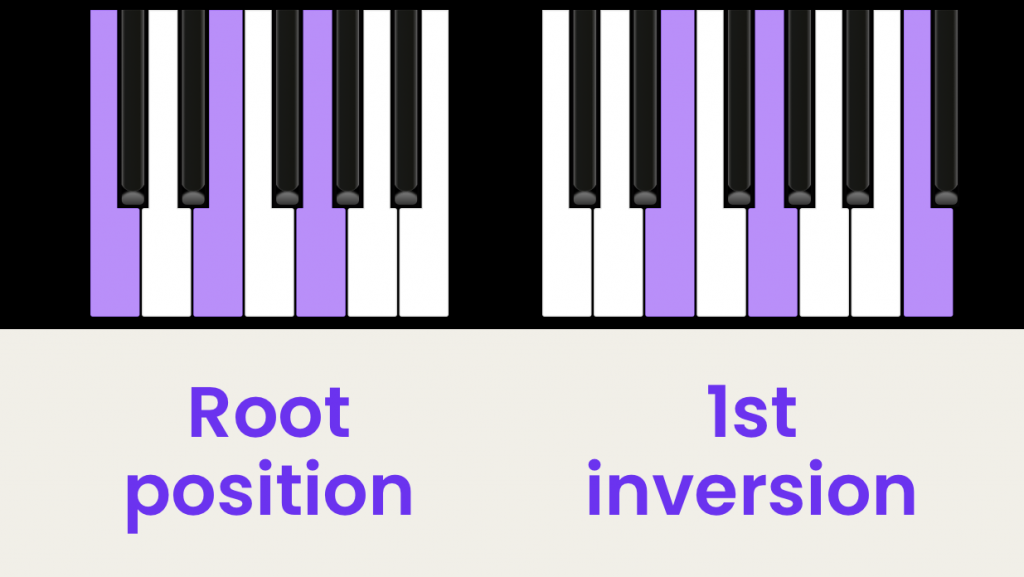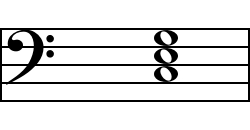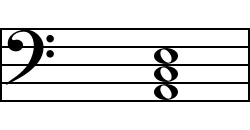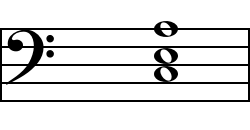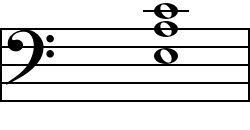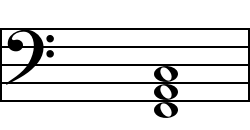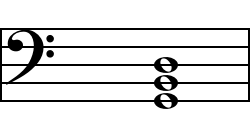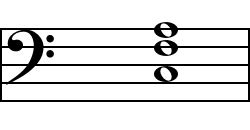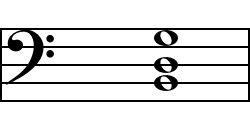Welcome to our exploration of piano chords. Here, we’re going to dive into the world of chord inversions. Let me start by expressing my love for playing chords on the piano. Chords truly bring the piano to life and are incredibly enjoyable to play. One of the fascinating aspects of chords is their versatility in creating various sounds, each evoking different emotions.
In addition to choosing chords to stir emotions on the piano, it’s also crucial to consider how to transition smoothly from one chord to another, especially when these transitions need to happen quickly. This is where the concept of chord inversions becomes invaluable. Allow me to explain.
Understanding basic chords
Before diving into inversions, let’s recall the basics of a chord. A chord is a combination of notes played simultaneously. The most straightforward and common type of chord is a triad, which consists of three notes that are stacked vertically in thirds and played together. For instance, the C Major chord is a very common triad consisting of the notes C, E, and G played together. A minor is another common triad, consisting of the notes A, C, and E played simultaneously.
Triads are super popular chords, and we strongly recommend you get very familiar with them as you continue on your piano journey.
Exploring chord inversions
Now let’s delve into chord inversions. The basic idea of a chord inversion is that you take the three notes of a triad and rearrange the order in which you play them, from the bottom to the top.
Using the C Major Triad as an example, C, E, G is played with C on the bottom, E in the middle, and G on top. You can rearrange the notes so that E is on the bottom and play the chord E, G, C. Alternatively, you can arrange the notes so G is on the bottom and play the chord G, C, E. When you rearrange the order in which you play the notes, you’re essentially inverting the chord.
The rule for 1st inversions
Put simply, an ”inversion” rearranges a chord so that a different note is in the bass. For example, taking the C Major chord (C, E, G):
To create a first inversion triad, take the bottom note from the root position triad and move it to the top. For C Major, this means taking the C from the bottom (played as C, E, G) and placing it on the top (played as E, G, C). E is the third in root position, and when the chord is inverted to first position, E becomes the lowest note.
The same process applies to the A minor chord:
In the case of A minor, take the A from the bottom (played as A, C, E) and move it to the top (played as C, E, A).
Note that in the case of A minor, C is the third in root position, and when the chord is inverted to the first position, C becomes the lowest note.
The rule for 2nd inversions
Moving on to the second inversion, the process involves another step. For the 2nd inversion, you bring the lowest note up to the top twice.
Applying this to C Major:
Start with root position (C, E, G), then move the C to the top, resulting in the 1st inversion (E, G, C). Now, starting with the 1st inversion chord (E, G, C), move the E to the top, which results in the 2nd inversion (G, C, E).
Note that G, which is the fifth in the root position of a C Major chord, becomes the lowest note in the second inversion.
For A minor:
Start with root position (A, C, E), then move the A to the top, resulting in the 1st inversion (C, E, A). Now, starting from the 1st inversion (C, E, A), move the C to the top to achieve the 2nd inversion (E, A, C).
Note that E, which is the fifth in the root position of an A minor chord, becomes the lowest note in the second inversion.
In both cases, despite the rearrangement of notes, the chord’s identity (quality) remains as C Major and A minor. Despite the different ordering of notes, you’re still playing a C Major chord and an A minor chord; that quality does not change.
The practicality of inversions in music
Inversions are not just theoretical concepts; they serve two main purposes. When it comes to composing or arranging music, the decision to use root position chords or their inversions hinges on two primary factors: sound quality and ease of chord transitions. Firstly, the choice of a chord in its root position or inversion significantly influences the tonal color and emotional impact of a piece. Root position chords often provide a sense of stability and strength, while inversions can introduce a sense of movement or subtlety, adding depth and variation to the musical narrative.
Secondly, and equally important, is the practical aspect of playability. Inversions often allow for smoother transitions between chords, minimizing the movement required across the keyboard. This not only facilitates more fluid playing but also enables the pianist to maintain a consistent rhythm and flow, especially in pieces that require rapid chord changes. By judiciously using inversions, composers and performers can thus enhance both the expressive quality of the music and the physical ease of playing it.
Smoothing chord progressions — The ease of transition with inversions
Let’s look at an example that illustrates how using inversions can make chord progressions smoother compared to using only root position chords. Consider a progression from C Major to F Major to G Major:
Chord progression in root position
In this sequence, playing each chord in root position requires significant hand movement across the keyboard. Moving from C major to F major, your hand shifts down to play the F chord, and then it shifts again to reach the G chord.
Chord progression with inversions
Now, let’s use inversions for a transition:
In this revised progression:
- C Major to F Major: Transitioning from C major in root position to F major in 2nd inversion is smoother as the note C is common to both chords and remains in the same position. Your hand remains relatively stationary, only adjusting to play A and F.
- F Major to G Major: Moving from F major in 2nd inversion to G major in 1st inversion is also very efficient.
This example shows how using chord inversions can significantly reduce hand movement across the keyboard, making transitions quicker and easier, especially in fast-paced music.
Visualizing chord inversions in notation and symbols
How root position and inversions look in notation
Root position
In musical notation, a chord in root position is depicted with its notes stacked directly on top of each other. Each note is aligned vertically, representing a solid, foundational structure. For example, a C major chord (C, E, G) in root position would show the C note on the lowest line or space, E in the middle, and G on top.
1st inversion
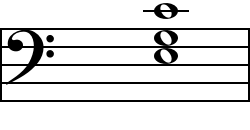
In the case of a 1st inversion, the visual representation changes slightly. The chord’s top note appears to be ‘floating’ above the others. This is because the chord’s root note is now on the top, leaving a larger gap between it and the middle note. Using C Major as an example again, E and G will be stacked with C ‘floating’ above them.
2nd inversion
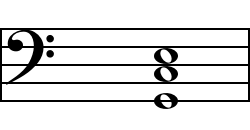
For a 2nd inversion, the notation shows two ‘floating’ notes. This reflects the original middle and top notes of the root position chord now being on top, with the original root note in the middle. In our C Major example, this would result in C and E floating, with G positioned beneath them.
Chord symbols for root position, 1st, and 2nd inversions
Root position
The chord symbol for a root position chord is simply the chord name. For instance, a C Major chord is denoted as ‘C’, and an A minor chord is denoted as ‘Am’.
1st inversion
In chord symbols, a 1st inversion is indicated by a slash followed by the note that is now the bass note. For example, C major in 1st inversion (E, G, C) is written as ‘C/E’, indicating that E is the lowest note. Similarly, A minor in 1st inversion (C, E, A) is written as ‘Am/C’, indicating that C is the lowest note.
2nd inversion
The second inversion of a chord is indicated using the slash notation as well, with the note that was originally the fifth of the chord now serving as the bass note. For the C major chord in second inversion (G, C, E), this is written as “C/G,” indicating that G is the lowest note. Similarly, for the A minor chord in second inversion (E, A, C), it is written as “Am/E,” with E as the bass note. This notation effectively communicates the inversion of the chord in sheet music and chord charts.
Embracing chord inversions
Chord inversions are more than just a technicality; they are a gateway to a more dynamic and expressive form of piano playing. Offering a world of dynamic possibilities, chord inversions allow pianists to express emotions more richly and transition between chords with greater ease. Whether it’s to achieve a specific emotional resonance or to ease the physical transition between chords, mastering inversions can significantly enhance your musical capabilities and the ease with which you learn to play new songs.
By mastering inversions, you unlock new dimensions in music-making. Each variation in chord structure—be it a root position, a first inversion, or a second—adds its unique character to the melody and harmony. I encourage you to embrace chord inversions as a key part of your musical toolkit. They are not just for their technical benefits, but for the depth and variety they bring to your piano playing.
While mastering chord inversions is crucial for your musical development, applying these skills to actual piano playing is equally important. If you’re looking to expand your repertoire and practice your newfound knowledge of chord inversions, Playground Sessions offers additional valuable resources that can help.
First, learn how easy it is to play countless songs on the piano by using simple and versatile chords from our popular blog post: Easy Piano Songs. This post will show you how just a handful of chords can unlock the ability to play countless popular songs, making your practice sessions both enjoyable and effective.
Additionally, if you’re just starting out on your piano journey or looking to solidify your foundational skills, our comprehensive guide on How to Play Piano is an invaluable resource. It covers everything from basic chords to essential playing techniques, offering a well-rounded approach for anyone new to the instrument.
Further Reading and References
- Exploring Second Inversion Triads: For more exploration of working with second inversion triads, Roger Williams University’s music theory resource offers a comprehensive look, diving into the unique characteristics and voice leading considerations of second inversion triads. It’s a great resource for both novice and experienced musicians.
- A Comprehensive Guide to Chord Inversions: The Hello Music Theory website presents an extensive guide on chord inversions. Covering everything from basic triads to complex seventh and extended chords, it’s a great resource for anyone looking to understand the foundational aspects of chord inversions and their practical applications across various musical genres.
